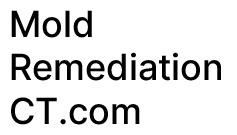Bathroom Mold Remediation
Bathroom Mold Got You Down?
Bathrooms are a hotbed for mold. The reason mold occurs so frequently in bathrooms is that the environment provides nearly ideal conditions for mold growth: frequent moisture, warmth, and limited ventilation. Every time you take a shower or bath, steam and water increase humidity. If this moisture isn’t quickly removed by ventilation or drying, surfaces like walls, ceilings, grout, and even cabinets remain damp long enough for mold spores to settle and start growing. Bathrooms also tend to harbor organic materials, such as dust (which is mostly shed human skin), soap scum, and cellulose from paper products, all of which provide food sources for mold. The additional thing that can happen is leaving wet towels, plush bathrobes, or bath mats in the room, which further adds to the potential for a moldy bathroom.
Professional Bathroom Mold Remediation
Protecting Your Family’s Health with Expert Mold Elimination
Your bathroom’s warm, humid environment is a perfect breeding ground for dangerous mold. What starts as small black spots on grout can quickly spread, threatening your family’s health and your property’s value.
Understanding the risks and knowing when to call professionals can save you thousands in health costs and property damage.
Understanding Bathroom Mold: More Than Just an Eyesore
Why Bathrooms Are Mold Hotspots
Mold needs three things to thrive: moisture, warmth, and organic material. Bathrooms provide all three in abundance:
- High Humidity: Showers create humidity levels well above 60%, the point at which mold begins to grow.
- Consistent Warmth: Temperatures between 70-80°F are ideal for mold growth.
- Food Sources: Mold feeds on soap scum, dead skin cells, drywall, and wood.
- Poor Ventilation: Limited airflow allows moisture to accumulate in hidden areas.
Common Dangerous Mold Types in Bathrooms
- Black Mold (Stachybotrys): The most toxic variety, producing mycotoxins that can cause severe respiratory and neurological symptoms.
- Aspergillus: Appears as black or green spots in grout. It can trigger serious allergic reactions and lung infections.
- Chaetomium: Has a distinctive musty odor and grows on water-damaged drywall. Prolonged exposure can cause neurological damage.
- Penicillium: Blue-green growth that spreads rapidly, causing severe asthma attacks and allergic reactions.
Serious Health Risks You Can’t Ignore
Immediate Health Effects
- Respiratory Problems: Persistent coughing, wheezing, shortness of breath.
- Allergic Reactions: Chronic sneezing, runny nose, red eyes, skin rashes.
- Neurological Symptoms: Headaches, dizziness, memory problems, difficulty concentrating.
- Physical Symptoms: Chronic fatigue, muscle aches, recurring fevers.
Long-Term Health Consequences
- Chronic Respiratory Disease: Development of asthma, bronchitis, and lung infections.
- Immune System Damage: Increased susceptibility to illnesses.
- Neurological Damage: Memory loss and cognitive impairment from mycotoxin exposure.
High-Risk Individuals: Children, the elderly, pregnant women, and anyone with a compromised immune system face significantly greater dangers from mold exposure.
How to Identify Mold in Your Bathroom
Visual Warning Signs
✅ Black, green, or white spots on grout, caulk, walls, or ceilings. ✅ Discolored or peeling paint indicating moisture behind walls. ✅ Warped or soft drywall around tubs, showers, and sinks. ✅ Staining patterns on walls or ceilings from water intrusion.
The “Musty Smell” Test
That persistent earthy, basement-like odor is often the first sign of hidden mold. If cleaning doesn’t eliminate the smell, you likely have mold growing behind walls or under flooring.
Health Symptom Indicators
If family members experience allergies or headaches that improve when they leave the house, mold exposure may be the cause.
Why DIY Mold Removal Fails (And Makes Things Worse)
The Bleach Myth
Bleach only kills surface mold. It can’t penetrate porous materials like drywall and wood where mold roots grow deep. Within weeks, the mold returns stronger than before.
Dangerous Consequences of DIY Attempts
- Spore Dispersal: Improper removal techniques spread millions of mold spores throughout your home.
- Cross-Contamination: Using the same tools in clean areas spreads the problem.
- Health Exposure: Without proper protective equipment, you’re breathing concentrated mold spores.
- Root Cause Ignorance: DIY attempts almost always ignore the moisture source, guaranteeing mold will return.
Our Professional 6-Step Mold Elimination Process
1. Comprehensive Assessment
- Advanced Tools: We use moisture meters, thermal imaging cameras, and air quality testing to find hidden water damage and measure spore contamination.
- Root Cause Identification: We find and document the moisture source—leaks, ventilation failures, etc.—because fixing the symptom without the cause guarantees mold returns.
2. Professional Containment
- Preventing Spread: We use physical barriers, negative air pressure with HEPA-filtered air scrubbers, and HVAC isolation to completely seal the work area and prevent cross-contamination.
3. Safe Mold Removal
- Material-Specific Treatment: Non-porous surfaces are cleaned with EPA-registered antimicrobials. Porous materials like drywall and insulation are safely removed and disposed of.
- HEPA Vacuuming: Captures microscopic mold particles from all surfaces.
4. Industrial Drying and Dehumidification
- Complete Moisture Elimination: Using high-velocity air movers and commercial dehumidifiers, we ensure all affected materials are returned to a normal, dry state.
5. Independent Verification
- Third-Party Testing: An independent Industrial Environmental Professional (IEP) conducts final air quality testing to confirm spore counts have returned to normal, safe levels.
- Documentation: You receive written certification that the job is complete—crucial for insurance and resale.
6. Complete Restoration
- Professional Reconstruction: We restore your bathroom using mold-resistant materials and proper waterproofing to prevent future problems.
Get Your Free, No-Obligation Assessment
Subscribe
Take the First Step
Add your e-mail here to be kept posted on new developments, services and what we are doing.

Mold Remediation CT
Experiencing mold, water, or sewage damage? We can help. Proven solutions to put you home or business back together again the way it was. More importantly put your mind at ease.
(203) 239-6653
Bethany, Ct 06524
Privacy Policy
Terms and Conditions
Cookie Policy
